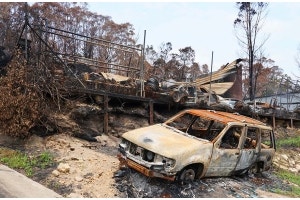
What's the Difference Between Bushcraft and Survival?
Terms like "bushcraft" and "survival" are often used interchangeably, leading to confusion among many. While both involve skills and knowledge necessary for thriving in the bush, there are distinct differences between the two disciplines. Here, we'll explore bushcraft and survival definitions and purposes.
While bushcraft and survival share some common elements, they are distinct disciplines with different objectives, techniques, and philosophies. Bushcraft emphasises long-term self-reliance, comfort, and the mastery of traditional wilderness skills, while survival focuses on immediate safety, adaptability, and the ability to endure in life-threatening situations.
Defining Bushcraft
Bushcraft is a term that encompasses a set of skills and practices focused on thriving in the wilderness through resourcefulness and self-reliance. At its core, bushcraft emphasises utilising natural resources and traditional techniques to comfortably live and thrive in the wilderness for extended periods. These skills often include shelter building, fire starting, foraging, water sourcing, navigation, and crafting tools from natural materials.
Key Aspects of Bushcraft
Skill Mastery: Bushcraft enthusiasts prioritise mastering various skills essential for wilderness living, such as fire starting techniques using friction or flint and steel, constructing shelters from natural materials like branches and foliage, and identifying edible plants and wildlife for sustenance.
Minimal Gear Dependency: Unlike survival scenarios where individuals may rely heavily on specialised gear, bushcraft emphasises minimal gear dependency. Practitioners often utilise basic tools like knives, axes, and cordage, but they're adept at improvising with natural resources.
Long-Term Comfort: Bushcraft is not solely about surviving in the wilderness; it's about thriving in it. Bushcrafters aim to create comfortable living conditions using their skills, constructing sturdy shelters, creating efficient cooking setups, and fashioning tools for various tasks.
Cultural and Historical Context: Many bushcraft techniques have roots in indigenous knowledge and historical practices. Practitioners often study and incorporate traditional skills passed down through generations into their repertoire.
Understanding Survival
Survival, on the other hand, refers to the basic human instinct and ability to endure and overcome adverse conditions and emergencies, often in life-threatening situations. Survival skills are crucial for navigating unexpected crises, such as getting lost in the wilderness, facing extreme weather conditions, or encountering dangerous wildlife. Unlike bushcraft, survival focuses on short-term strategies for immediate safety and rescue.
Key Aspects of Survival
Priority on Immediate Needs: In survival situations, the immediate priorities are typically focused on addressing basic physiological needs: shelter, water, fire, and food. Survivalists aim to quickly address these needs to ensure short-term safety and increase the likelihood of rescue.
Resource Utilisation: While survivalists may use some bushcraft techniques, the emphasis is on using any available resources, including modern gear and improvised tools, to ensure survival. The goal is to make the best use of whatever is at hand to overcome the immediate challenges.
Adaptability and Resilience: Survival situations often require rapid adaptation to changing circumstances and environments. Survivalists must remain flexible and resilient, making quick decisions and improvising solutions based on the situation at hand.
Emergency Signalling and Rescue: Unlike bushcraft, where the focus is on self-sufficiency, survival situations often involve signalling for rescue and assistance. Survivalists may use signalling devices such as mirrors, whistles, or fire to attract attention and increase their chances of being found.








